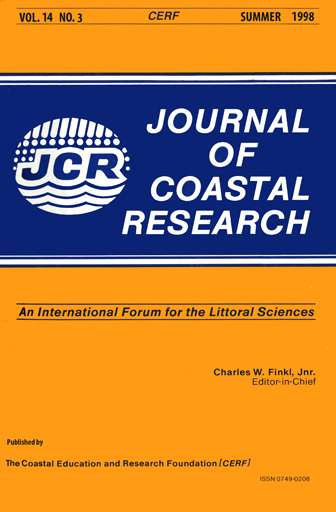Physical Controls on Development of Lagoon Sand Deposits and Lagoon Infilling in an Indian Ocean Atoll
Keywords:
Atoll infilling, carbonate sediments, hydrodynamics, sediment transport, atoll sedimentationAbstract
Lagoon infill from autochthonous sediment, derived from reef flats, is the dominant constructional processes in coral reef environments once reefs attain a stable elevation with respect to sea-level. Tide- and wave-induced currents were measured and the hydraulic response of bioclastic sediments examined to assess physical controls on development of lagoon sand bodies and infill of the Cocos (Keeling) Islands atoll, Indian Ocean. Results show that the sediment transport system is active during mean energy conditions. Peak wave-induced currents (140 cms-1 east, 97 cms-1 south) entrain 100% and 97% of reef flat sediment respectively. Potential mobility values decrease through shallow passages (100%, 73% east and south) to sand aprons/flats (73%, 11%, east and south) and shallow lagoon (11% PM) reflecting the lagoonward decline in wave-induced current energy. Unidirectional ocean-side reef flat to lagoon currents transport sediment through passages to sand bodies. This study identifies a hydrodynamic block, generated by opposing passage and lagoon currents at higher tidal stages, preventing the transport of sediment to the shallow lagoon. This is of great significance as it constrains the active sediment transport system between the reef flat and sand bodies and controls the areal expansion of sand bodies. Measured higher rates of sediment transport on the east and deposition in a spatially limited area are responsible for vertical accretion of san d aprons and the development of the flood delta morphology. Lower rates of transport and deposition in a greater spatial area are responsible for the subtidal nature and low relief of southern sand flats. Physical constraints on sand body development and lateral extent have several important implication s for infilling the Cocos lagoon: 1) sand aprons have reached their lateral progradation limit; 2) lagoon infill will become more dependent on allochthonous supplies of sediment than autochthonous delivery of reef flat produced sediments; 3) lagoon infilling will take much longer than 4,000 years as indicated by Guppy (1889).


